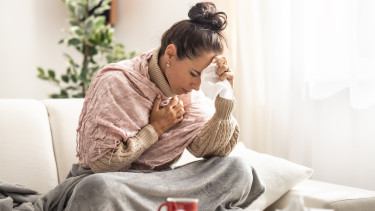Which COVID-19 vaccines trigger the strongest immune response in Hungary?

mRNA vaccines are the best
Following hundreds of antibody tests it appears that the COVID-19 vaccines of Moderna and Pfizer/BioNTech provide the greatest projection, Ottó Sinkó, co-CEO of Videoton Holding, told Portfolio, summing up the results of a company-wide voluntary testing.
He stressed that this is the outcome of everyday tests, and cannot be considered scientific findings, yet they are important because there is hardly any information available in Hungary about how the vaccines perform.
The biggest problem in this respect is that local authorities do not share any information on the vaccination status of those that got infected, were admitted in hospital, ended up in ICU, needed mechanical ventilation and died. Such data would be immensely important not only to have an idea about how the vaccines work in reality – in most cases they do prevent severe symptoms and death – but also to urge unvaccinated people to get their jabs. Why? Because international examples show that at least 95% of those that contract coronavirus and end up in hospital have not been vaccinated. However, there are only sporadic reports by doctors in Hungary that confirm this ratio, while authorities do not disclose such statistics.
Videoton has performed more than 800 antibody tests since July. They only test employees at least four months after their COVID-19 infection or their second jab. With the exception of Janssen that was administered only to a handful of employees, the company was able to test large groups of the recipients of each vaccine type.
The company detected the following antibody levels per vaccine:
- Moderna: cc. 8,000 AU/mL
- Pfizer/BioNTech: 5,600 AU/mL
- AstraZeneca: cc. 1,550 AU/mL
- Sputnik V: cc. 1,550 AU/mL
- Sinopharm: cc 600 AU/mL
Antibody levels are expressed in arbitrary units (AU) per millilitre. Anti-spike IgG values of ≥50 AU are interpreted as seropositive.
The company adjusted the above data for the test results of those that had contracted coronavirus before their vaccination. Their antibody levels were north of the respective figures above, as a result of their pre-jab infection.
The conclusion of the antibody tests is that the mRNA vaccines (Moderna, Pfizer/BioNTech) trigger the highest antibody response, while adenovirus vaccines (AstraZeneca, Johnson & Johnson, Sputnik V) trigger a smaller response, but still provide strong protection.
Questions arise only in the case of China’s Sinopharm (inactivated virus), particularly for those over 60 years of age, in which group a lot of people had extremely low antibody levels. Some had no protection whatsoever, in fact.
3rd doses highly effective
This coincides with the results of a previous round of antibody testing by Videoton which showed that one third of people above 60 vaccinated with the Sinopharm vaccine had neither antibodies or T-cells and were not protected against the coronavirus. Subsequently, Videoton had the costly T-cell immunity test carried out. The results showed that people with no antibodies also had no T-cell immunity.
Balázs Sarkadi, biochemist, research professor of Semmelweis University, and biostatistician Tamás Ferenci have both came to the same conclusion. They have also tested people vaccinated with Sinopharm for antibodies and found that the efficiency of the Chinese COVID-19 shot is weak over 60 and keeps waning with age.
Based on the results of their latest testing round Sinkó stressed that
they have strongly recommended taking up a third dose for those with a low antibody level or a negative test result.
Following the third jab they have tested antibody levels again and got highly favourable results. The number of antibodies with those that received two Sinopharm doses and had a third shot has increased greatly. The average antibody count in this group of 60+ people was 141 AU/mL, and a lot of the subjects did not have even the critical 50 AU/mL. Following the third dose, which was the Pfizer/BioNTech vaccine (Comirnaty) in every case, the average antibody level shot up to 18,000.
A Pfizer vaccine given after two doses of Sinopharm is amazingly effective
, said Sinkó.
How many people are affected?
As of the end of the 37th week (19 Sept), about 560,000 Hungarians in the 60+ age group have received Sinopharm as their second dose of a COVID-19 vaccine. This corresponds to over 27% of the 60+ age group population and about 22% of the total adult population in the country. And note that some 550,000 people in the 60+ age group are not vaccinated at all.

Antibody levels decline over time
Sinkó also said they are trying to monitor antibody levels in vaccinated people over time. Regardless of the specific vaccine used, antibody levels drop by two-thirds after every three months. This is a problem for those who start with low levels in the first place, he said. Some of the elderly people who received the Chinese Sinopharm vaccine had insufficient antibodies even shortly after vaccination, and the rest may also have dropped below the minimum level after three months, Sinkó said.
“While those vaccinated with Pfizer or Moderna vaccines will still have a high antibody level even after it drops to a third of the original, this is not the case with Sinopharm. A low starting level of 100 to 150 means that a 66% decrease puts the individual under the threshold,” he pointed out.
Overall, after two doses of Sinopharm there is a need for a third jab, preferably Pfizer in my opinion,
Sinkó said.
The data from Videoton aligns with international research that show the Moderna vaccine could offer stronger protection for a longer period than Pfizer as the starting antibody count is higher, so it still offers adequate protection after three months when the levels drop.
According to Sinkó, it is very important to achieve and maintain immunisation as the fourth wave is beginning. Videoton has seen a rise in case numbers in parallel with the nationwide increase. The first new case was confirmed in the second week of August after 10 uneventful weeks, and there has been a very slow increase ever since. “We now have 2 to 4 new cases a week on average among 5,000 to 6,000 people. This is still a low figure, but it shows that the fourth wave has arrived in Hungary,” he added.
Sinkó is wrong; the fourth wave is not beginning, it started months ago. Plus the key metric now is not the number of new cases, as the pattern suggest that only those get tested (positive) who seek medical help for having such severe symptoms, rather than the number of COVID-19 patients in hospital and on ventilator, as well as the number of coronavirus-related deaths.
The vaccination campaign has practically balked. Third shots have been a lot more in demand than first and second doses combined since the beginning of August. The trend becomes clear as soon as you take a look at the second pair of charts below.


Age or vaccine breakdown for 3rd doses are, of course, not available.
COVID and the flu
I feel that the attitude of people towards COVID has changed. Earlier waves were characterised by fear and caution, while now everyone is trying to gloss over the problem and the significance of the fourth wave, Sinkó said.
In his view, the upcoming wave will not be severe among office workers at Videoton, who are 90% vaccinated, but vaccination uptake in the company’s manufacturing units is barely above the national average. This kind of uneven distribution may be a nationwide phenomenon, which means the virus will be able to spread faster in certain groups and communities. On the other hand, manufacturing halls may be a safer environment due to large space and ventilation.
The significance of being vaccinated against both COVID and the flu will increase in the coming period according to Sinkó.
Physicians and virologists are increasingly saying that the two viruses may lead to a very serious outbreak together. While last year, the lockdown suppressed the flu as well as COVID, both will be able to spread this winter. “Videoton has been offering employees free flu shots for several years. I trust that we can avoid last year’s debacle when we did not get the Vaxigrip vaccines as the government seized these for pregnant women, presumably because it forgot to order the vaccine,” Sinkó said.
Summary
- Overall, we can say that Pfizer and Moderna generate the most significant neutralising antibody titres based on Videoton’s experiences, but adenovirus vaccines also offer a high level of protection.
- Sinopharm performs the worst, and a third shot is justified in that case, especially for the elderly, as it multiplies antibody levels according to tests.
- Regardless of the vaccine used, the number of antibodies drops by about two-thirds after three months, underlining the need for a booster shot.
Cover photo: MTI/ Péter Komka








